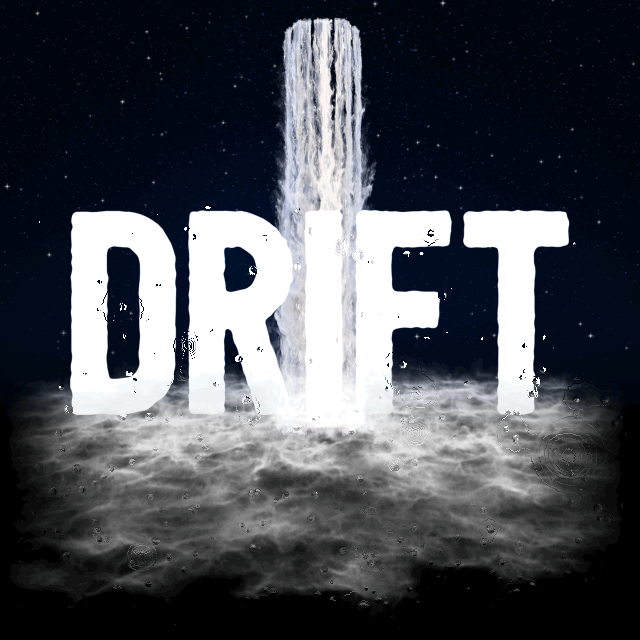Hello friends! We can’t thank you enough for your support! We sold out for the event! We just wanted to drop in to prepare you for your upcoming Drift experience and explain exactly what will be going on so that you’re not left guessing during the performance. We also wanted to update our start time. Doors will now open at 7:30pm. Below we list each element of Drift and why we chose these elements to be a part of the soundscapes you’ll be hearing. Our work is heavily influenced by scientific research into how sound can shape and improve the human mind, and how neurofeedback can optimize your brain health and overall wellness. Let’s get started!
Brainwaves
If you’re already aware of your 5 major brainwave states and how they can shape your life, you’re well ahead of the curve for Drifting. If these mysterious electrical frequencies are new to you, allow me to quickly outline each one and their role in how our brain works, from the fastest waves to the slowest.
Gamma: Your gamma brainwave is the fastest and is believed to serve a holistic function by gathering all of the other brainwave states into one coherence. It’s also believed that our highest virtues, love, joy, kindness, and empathy, come from this brainwave state. People who were brought up in a meditative culture or those who have decades of meditation experience usually have higher amplitudes of gamma wave in EEG studies.
Beta: Your beta brainwave is responsible for focus, and the “fight or flight” responses. It also has a direct connection to your sympathetic nervous system. People who suffer from high anxiety tend to have an unhealthy amount of beta activity and an easy way to register if your beta waves are too present is if you’re often worried about the future. During meditation our beta waves drop significantly allowing us to relax.
Alpha: Your alpha brainwave is known as the “flow” state. When you are fully present in the moment you have a healthy dose of alpha activity going on. Professional athletes display extremely high amounts of alpha activity just before performing a physical action. Musicians also generate high alpha activity when performing their instruments. During meditation we encourage our alpha waves to build over time as we learn to be present.
Theta: Your theta brainwave is responsible for creative thought and it’s also the cusp of our conscious/subconscious. If you find yourself vividly daydreaming you’re getting a nice dose of theta waves in that moment. When you’re lying in bed and you have the most brilliant ideas but you’re unable to articulate them before they vanish, that’s a burst of theta waves. Artists and creative types have higher amounts of theta than the average person. Our theta waves are also believed to play a role in our healing processes as well. Yoga Nidra is understood to be a theta encouraging meditation practice.
Delta: Your delta brainwave is the slowest of brainwaves and is critical to our sleep cycle and healing processes. As we age our delta activity begins to rapidly decrease leaving us feeling unrested and grumpy. This is decline is even more pronounced in men than women. As this happens we quickly lose our ability to open our empathy for others. Don’t stress out about this though because we have sonic techniques now which can help to stimulate these brainwaves as we age.
Breath
Your breathing is automatic, but consciously overriding your breath rate to slow it down under 10 breaths per minute can engage your parasympathetic nervous system and disengage your sympathetic. Your parasympathetic regulates your “rest & digest” functions and is present when we are most relaxed. During a Drift experience you’ll hear a slow wave made of pink noise frequencies which will anchor your breath and guide you into a parasympathetic state. By simply controlling the breath in this way we begin a cascading effect where we lower our heart rate and beta brainwaves. Pink noise is present in every healthy biological system and can improve our sleep and memory. Practice breathing with the video below if you’d like to get a jump start on Drifting.
Heart
As we slow our breath down you may begin to notice your heart beat become more pronounced at the bottom of your exhale. As we breath in our heart speeds up ever so slightly and as we exhale it slows down ever so slightly. This is known as heart rate variability. As you continue to slow your breath attempt to anchor your focus to your heart beat. Holding your breath for short bursts can help you find it quickly. The more you listen for this pulse the more you may feel your entire body swaying slightly to the rhythm. Your head may be gently bobbing by this point and that’s a really good sign that you’ve begun Drifting. Chase this feeling during your meditation and hold onto it. You are at your most present when tuned in with your heart beat in this way. Practicing this technique will help you to eventually lower your heart rate at will, reducing your chances for heart attack and stroke.
Quintessence
Now that we have the basics outlined, let’s explore how the Drift sound bath works. We’ll be using a Muse EEG headset to monitor my 5 brainwave states and I then route them into a digital audio workstation where I can assign each brainwave to its own set of virtual instruments to play. Although it’s easy to assign them to exciting instruments like a 5 piece orchestra or wild sounding synths, we have found that triggering field recordings of nature and beat representations of each brainwave to be the most relaxing listen for meditative purposes. Nature sounds have been observed to help engage an “outward focus” instead of “inward focus.” Inward focus is often associated with depression and anxiety.
Auditory Beat Stimulation
Researchers discovered long ago that exposing ourselves to light/sound pulses that match up with our brainwave pulses can stimulate desired brainwave configurations at will. Each of my monitored brainwaves will be playing its own binaural beat instrument tuned to its exact range of pulses so we’ll be hearing a roughly accurate sound representations of the symphony of brainwave frequencies blending in real time. Isochronic tones, binaural, and monaural beats are incredibly accessible and powerful tools to add to anyone’s wellness toolbox.
history
Neurofeedback has been around since the 1940’s but we often still think of it as science fiction. Here are a few links to previous experiments in neurofeedback composition for you to explore.
research
Here’s a link to a treasure trove of scientific study that has informed our work, should you want to dive deeper.
MUSe Headband
Interested exploring your own brainwaves at home with neurofeedback? If we’ve peaked your interest you can purchase a Muse headband through our website for a 15% discount. Their app is amazing and comes with several soundscapes for your heart, breath, mind, and posture to play. We can’t recommend this wellness tool enough! Feel free to bring yours to any Drift event if you want to observe how your brainwaves react to the soundscapes heard.

